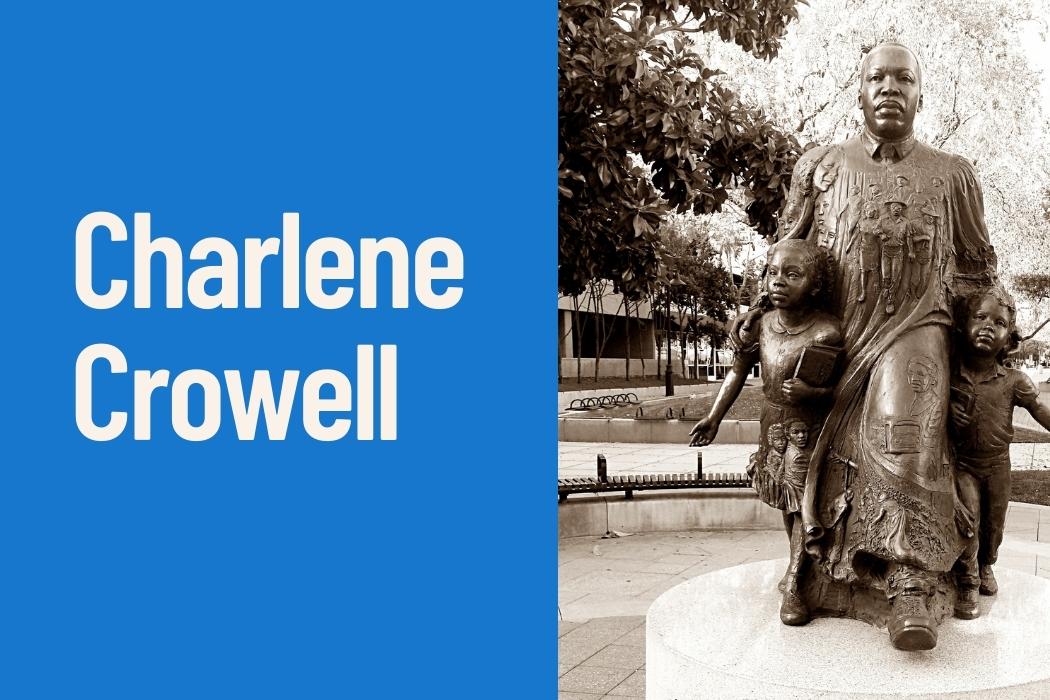by
On Monday, Jan. 17, the nation will pause to honor the life of the late Rev. Dr. Martin Luther King Jr. The only Black American to be honored with a national holiday, many will recall his historic civil-rights achievements.
But Dr. King also stood as a tireless champion for economic justice. His last public speech, delivered a day before his 1968 assassination, was before a Memphis audience in support of a lengthy strike for fair wages among its largely Black sanitation workers. That prophetic oration often referred to as his “Mountaintop” speech, also noted the city’s economic disparities.
“It’s all right to talk about “long white robes over yonder,” in all of its symbolism,” Dr. King said. “But ultimately people want some suits and dresses and shoes to wear down here! It’s all right to talk about ‘streets flowing with milk and honey,’ but God has commanded us to be concerned about the slums down here, and his children who can’t eat three square meals a day.”
When Dr. King moved his family into the city’s Lawndale neighborhood, he described it as “an island of poverty in the midst of an ocean of plenty.”
“Chicago boasted the highest per capita income of any city in the world, but you would never believe it looking out of the windows of my apartment in the slum of Lawndale,” Dr. King said. “My neighbors paid more rent in the substandard slums of Lawndale than the whites paid for modern apartments in the suburbs. The situation was much the same for consumer goods, purchase prices of homes, and a variety of other services.”
For example, the King family paid $94 per month for four run-down, shabby rooms. During the campaign’s open housing marches on Gage Park and other predominantly white places, new and larger apartment dwellers paid only $78 a month for five rooms.
Fast-forward to today and the cost of rental housing remains a challenge for millions of families. The average fair market price for a two-bedroom apartment is $1,295 per month. Yet the highest rent affordable to an average full-time worker is $977, according to the National Low Income Housing Coalition (NLHIC). Its recent report, titled “Out of Reach,” exposes the mismatch between wages people earn and the price of decent rental housing in every state, metropolitan area, and county in the U.S.
Over 7.5 million extremely low-income renters are severely housing cost-burdened, finds the report, spending more than half of their incomes on housing. On average, someone who works 40 hours per week all year round must earn $24.90 per hour to afford a modest two-bedroom home without becoming housing cost-burdened. The average renter’s hourly wage is just $18.78 per hour, however, and minimum-wage workers earn even less.
Additionally, ample research documents how consumers seeking to transition from renters to homeowners face even steeper financial barriers to building family wealth.
In 2019, prospective buyers of a median-priced home of $321,500 needed to save 11 years to accumulate a 5% down payment of $26,000 on that home, found the Center for Responsible Lending (CRL) in its independent and recent report. But buyers seeking the least costly loans, conventional mortgages, needed a 20% down payment of $64,300 plus another $9,663 for closing costs.
“There is a huge disconnect between our collective view of America as the land of opportunity and this data, which show renters face a steep climb in saving for homeownership,” said CRL researcher and report author Christelle Bamona. “This climb is especially steep for Black and Latino Americans, essential workers, and people weighed down by student debt.”
The National Association of Real Estate Brokers (NAREB) underscores CRL’s findings. Its 2021 research, “State of Housing in Black America: Emerging from the Pandemic Recession” (SHIBA) found that although homeownership generates the largest part of building household wealth, fewer than 45% of Black households own their homes, compared to nearly 75% of whites. Further, Black homeowners captured only $198 million in savings from the Federal Reserve’s lowering of interest rates during COVID. Nationwide, the savings due to this policy change totaled $5.8 billion.
“Blacks have made little if any, strides at closing the disparate homeownership gap between those of our White counterparts,” noted NAREB President Lydia Pope in the report’s foreword. “Systemic discriminatory regulations and policies continue to thwart any meaningful effort at closing the homeownership gap.”
For example, mortgage pricing, and under-appraisal of home values are examples of how the growth of Black homeownership and, in turn, wealth is systematically suppressed. Since 2019, the rate of mortgage loan denials to Blacks (16%) has consistently been double that of whites (7%).
Source: Washington Informer Newspaper




